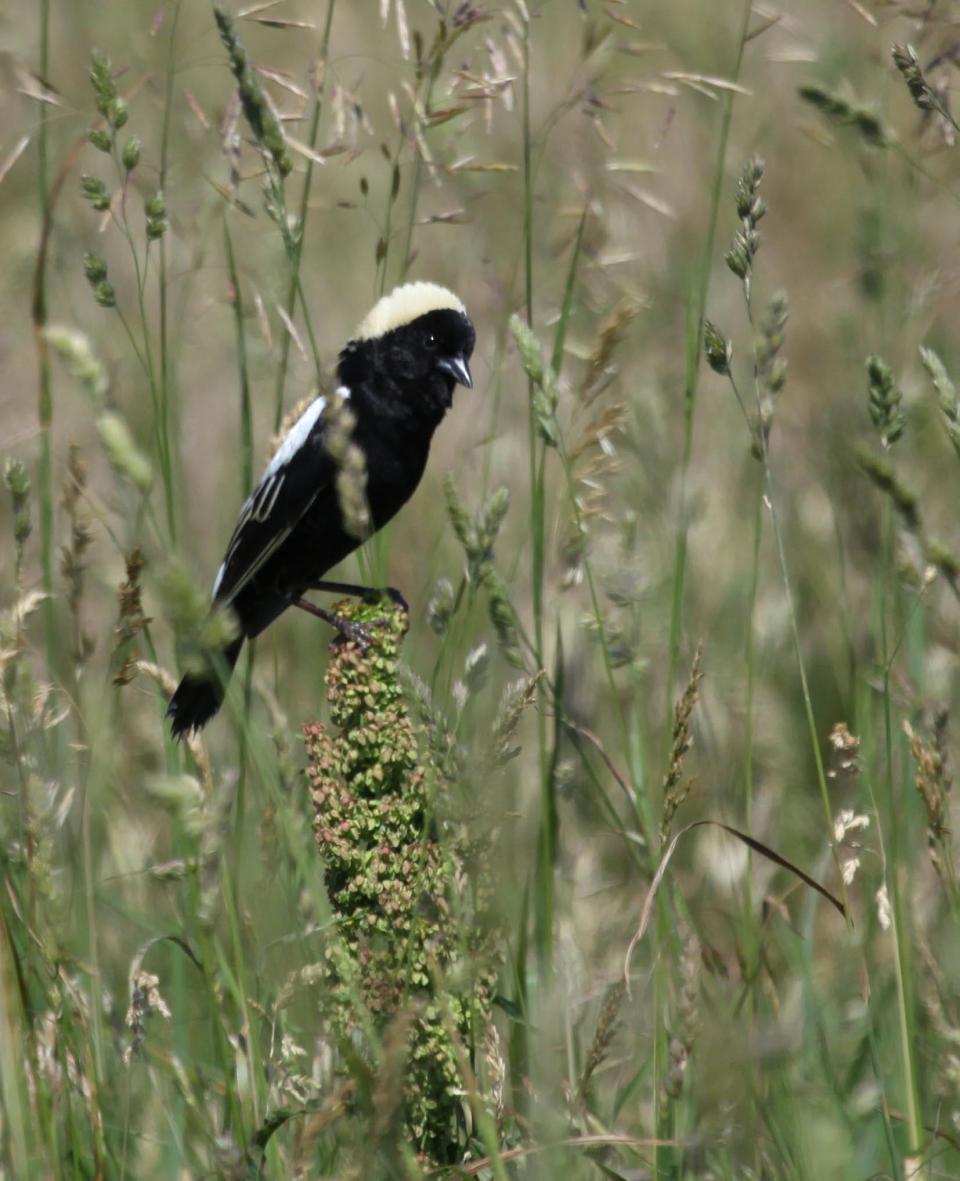For fun on the fly, flock to the Windy City for bird-watching pageantry

Along Lake Michigan, Chicago’s landmark skyline, beaches and parks not only attract millions of visitors annually, but also millions of birds, especially during spring and fall migrations. The city ranks as one of the top bird-watching destinations in the country because of its abundance of fresh water and location on the Mississippi Flyway, one of four major migratory bird routes in North America.
“During migrations, Chicago attracts some of the highest numbers of diverse bird species in the country because they stop here to rest and feed in the city’s open, green spaces before continuing their journeys,” says Judy Pollock, president of the Chicago Audubon Society.
More than 350 bird species have been spotted in Chicago during annual migrations. They pass through while flying from the Gulf of Mexico, Caribbean, Mexico and Central and South America to their breeding grounds in the northern U.S. and Canada.

In spring, uncommon species seen in Chicago include piping plovers, Kirtland’s warblers, bobolinks, whimbrels and American avocets. During fall migration, birds, including thousands of hawks, stop here before heading south.
The city’s bird-friendly public lands are free to enter. Many are accessible via public transportation and the city’s extensive bike path network. Visitors can join guided walks and educational programs hosted by birding groups and nature centers.
Lakefront hot spots
“Some of Chicago’s 613 parks protect globally rare natural areas, such as dunes on the lakefront, as well as prairies, wetlands and oak savannas representative of native landscapes found in Illinois before 1400, which is pre-European settlement,” says Matt Freer, Chicago Park District assistant director of landscape, cultural and natural resources. According to Freer, 361 bird species have been sighted in the 15-acre Montrose Point Bird Sanctuary in Lincoln Park on Chicago’s North Side.

Just after dawn, when birds are most active, birders flock to the sanctuary in spring to see as many as 35 species of colorful warblers flit around the dense thicket of honeysuckle shrub called the “magic hedge.” The thicket flanking a paved path looping through the park was planted to camouflage Army barracks, now gone, on the former Cold War Nike missile site. In the sanctuary’s protected dunes, a pair of rare piping plovers that local birders named Monty and Rose return annually to nest.
The Fort Dearborn Chapter of the Illinois Audubon Society conducts free bird walks in the sanctuary and other natural sites around Lincoln Park. Mark Luscombe, the chapter's president, says, “You’ll hear the birds before spotting them. Depending upon their goals, bird species use diverse vocalizations to communicate migratory location, attract mates and stake out territory.”
Luscombe’s other favorite Lincoln Park birding spots are the Bill Jarvis Migratory Bird Sanctuary and North Pond Nature Sanctuary. He recommends introducing kids to birding through the Peggy Notebaert Nature Museum and visiting nearby Lincoln Park Zoo, where a colony of as many as 400 black-crowned night-herons nest annually.
Northerly Island Park urban nature sanctuary south of Adler Planetarium on the Museum Campus, once the site of the 1933 Century of Progress World’s Fair, was transformed into a wetlands habitat, and now draws migrating bobolinks, Iceland gulls, snowy owls, brant geese, great black-backed gulls and surf scoters.

On the city’s South Side, birders head to Wooded Island in 543-acre Jackson Park, designed by landscape architect Frederick Law Olmstead as part of the 1893 World’s Columbian Exposition fairgrounds. More than 280 bird species frequent the lush lagoon landscape, including rare migrating cerulean warblers, Brewer’s sparrows and merlins.
Don’t forget forest preserves
Not all migratory birds stay on the lakefront. Many prefer to fly inland to rest in the Forest Preserve District of Cook County’s 70,000 acres of natural river systems, wetlands, oak savannas and forest habitats.
On the city’s northwest side, the 80-acre LaBagh Woods preserve welcomes more than 200 migratory bird species. The 20-mile, multiuse North Branch Trail System leads to the Chicago Botanic Garden, another nationally known birding hot spot.
Jessica Becker, a nature programming specialist with the Cook County forest preserve, says, “Many people associate wildlife with open, sprawling environments; however, the diversity of migratory bird species in forest preserves within Chicago’s densely populated urban areas is pretty impressive. Their presence indicates the quality of the natural environment.”
This article originally appeared on USA TODAY: The best bird watching in Windy City Chicago

 Yahoo Movies
Yahoo Movies 
